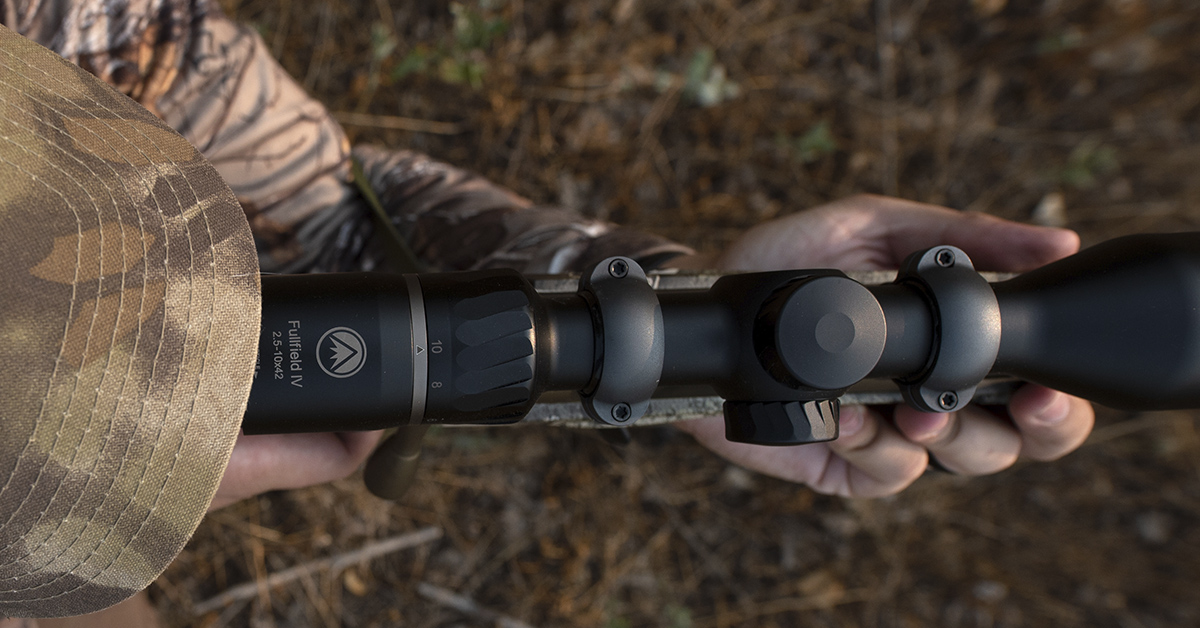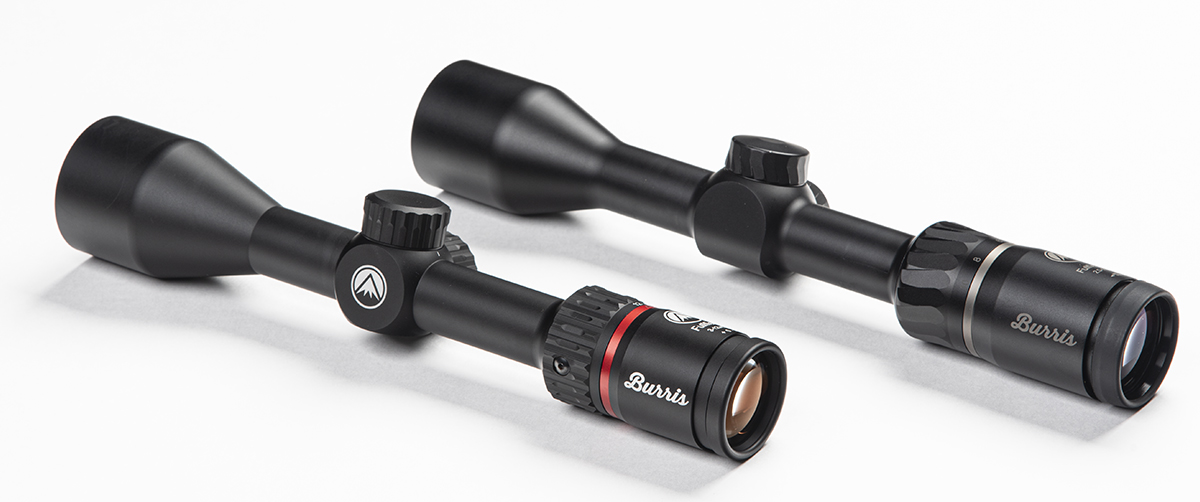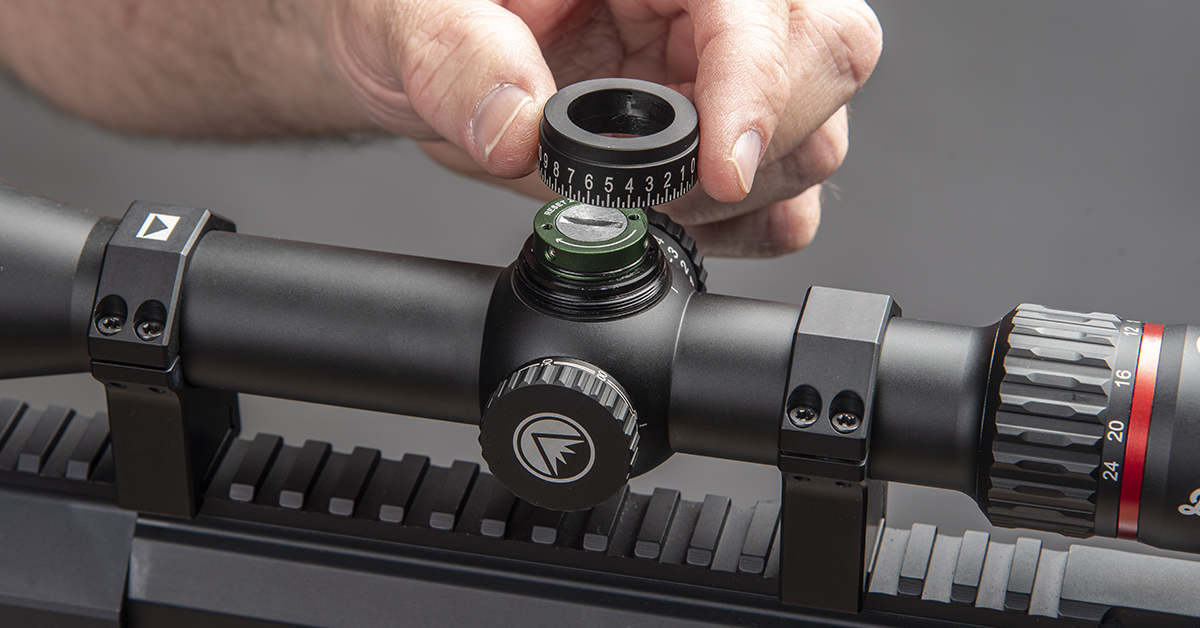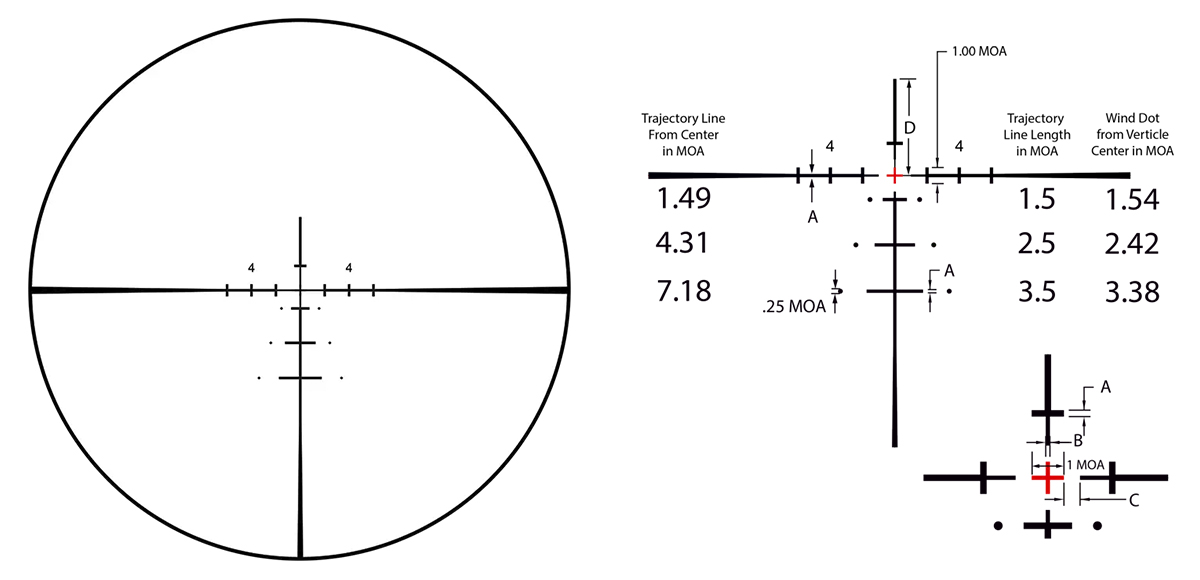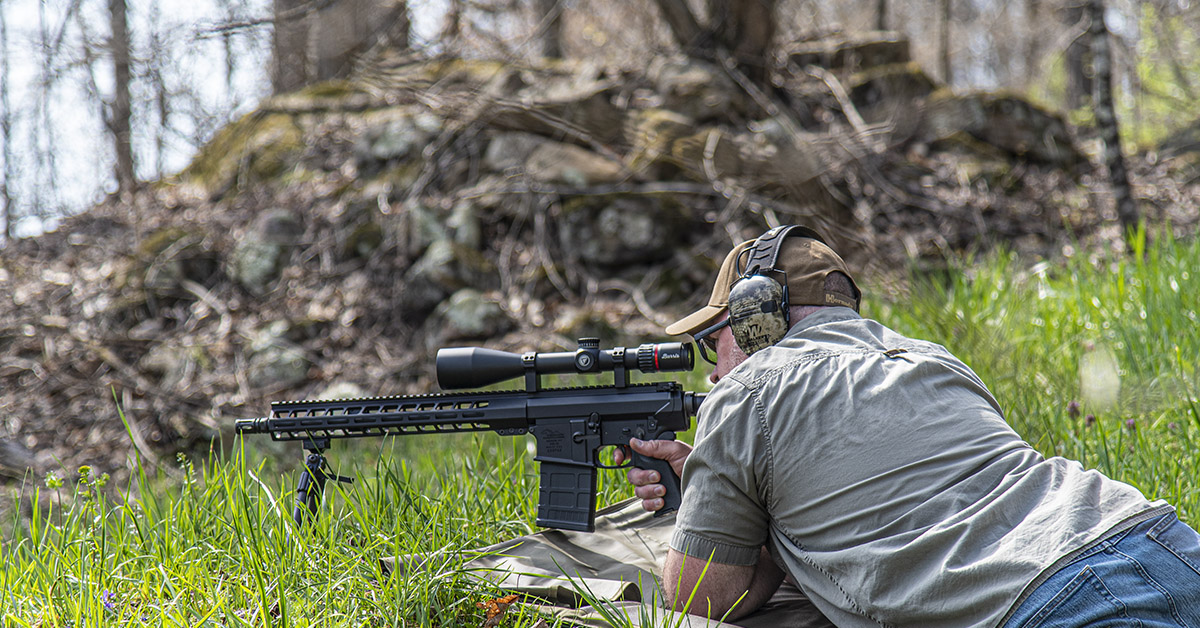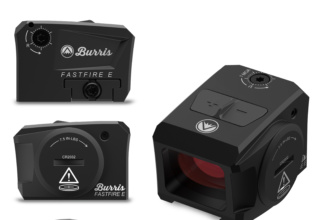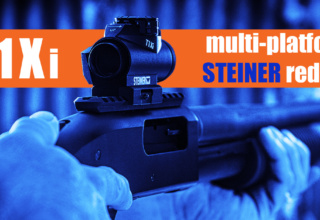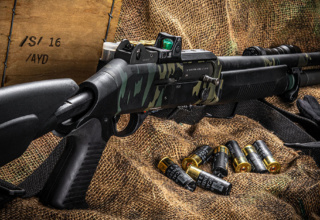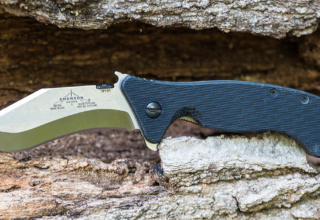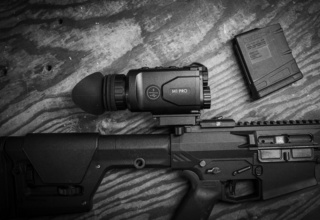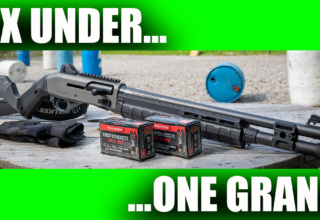Burris upscales the venerable Fullfield riflescope line with new-generation features and performance for the modern shooter
by Rob Reaser
Burris optics have a long history in hunting circles, and rightly so. Don Burris — formerly an engineer working for the Redfield optic company in Denver, CO — established his own company in 1971 with the sole intent to build the premiere hunting riflescope. Burris’ guiding star for his “better” optic included a wider field-of-view for faster sight picture acquisition and improved game observation. The fledgling company released its first product, the Fullfield riflescope, in 1975.
Burris followed this introduction two years later by adding a new glass system to the Fullfield. Building on the improved viewing area of the Fullfield, Burris applied his talents to enhancing light transmission. For his engineering efforts, Burris pioneered the multi-coated lens concept. This spawned the famous Burris HiLume riflescope lenses that debuted in 1977.
Advertisements of the day claimed, “HiLume multi-coated lenses let up to 99.5% of light pass through each lens surface,” and “Super light-gathering, day-stretching lenses let you be the first and last hunter to see game.”
Hunters bought into the performance claims with satisfactory results. Now, at the brand’s 50th anniversary, Burris has sold more than one million Fullfield riflescopes in the last half-century.
Over the decades, the company continued to improve upon Don Burris’ original optic designs. This year, in commemoration of the brand’s 50-year milestone, Burris launched the fifth-generation Fullfield riflescope series, comprising six all-new models ranging from a diminutive 2-8×35 model to a long-range 6-24×50 variant, which is the subject of our review.
Gen V vs Gen IV Fullfield
As you would expect, the new Fullfield riflescopes share prominent DNA across the model platform. In keeping with Burris’ latest trend towards lighter and more compact optics, the new Fullfields are just that — lighter and more compact than their predecessors.
Here is a perfect example of what we’re talking about. The Fullfield IV at right is the previous-generation 2.5-10x42mm with a one-inch main tube diameter. At left is the new-generation Fullfield 3-12x42mm with a one-inch main tube. The latter is a more powerful optic with a broader magnification range. Still, the new Fullfield is 0.5 inches shorter and 2.1 ounces lighter than the older model.
In a hunting optic, doing more with less is always better, and in this regard, the new-generation Fullfields knock it out of the park.

Continuing the “Industrial Design”
The newest-generation Fullfields, in addition to their reduced dimensions and weights, now fall in step, aesthetically, with the other updated optics across the Burris optic lineup. Part of this is what Burris calls an “industrial design” concept. Markers include a distinctive red ring surrounding the ocular bell and high-relief knurling along the power ring and adjustment knobs. All Fullfield models continue the rear focal plane tradition.
The upgraded ring and knob texturing is a big improvement over the old design, which we found to be “under-aggressive” and somewhat difficult to adjust when wearing gloves. The new design, by contrast, provides a firm, positive grip that lets you quickly adjust magnification.
The same holds true for windage and elevation knob rotation. The knobs give you ample traction to make necessary adjustments with or without gloves, and they are neither too stiff nor too loose.
Knob Synergy
Part of the new Fullfield riflescopes that will get a lot of attention is Burris’ equally new Knob Synergy system. The 2025 Fullfields are the first Burris optics to host this feature.
Burris engineers developed the Knob Synergy system to enhance customization and operational flexibility for various shooting needs and styles. This is a universal system that allows the shooter to swap between capped and exposed elevation knobs and permits the installation of custom exposed ballistic knobs. Burris will be implementing this system in all future non-tech-enabled Burris riflescopes.
The 6-24×50 Fullfield we tested comes with the Advanced Exposed elevation knob with positive/negative elevation adjustment and a zero click stop. The manual walks you through the setup, which we found easy, and is accomplished with an included 1.5mm hex wrench.
Because parallax correction is essential in long-range shooting, the 6-24×50 Fullfield (as well as the 4-16×50 and one model in the 3-12x42mm offerings) includes a side focus with a 25 yards-to-infinity range).
Reticle Options
Burris offers several reticle options among the various Fullfield models, including the Ballistic E3 non-illuminated (shown here at left; Ballistic E3 illuminated at right), Plex, Wind Ret-Illuminated, Heavy Plex, and 3P#4.
We found the Ballistic E3 non-illuminated reticle (the only reticle offered with the 6-24×50 model) to provide a clean and crisp view on the shooting bench, with much credit for precision point-of-impact going to the thin reticle design. On the flip side, aging eyes may struggle with the fine lines in darker environs and in low-light shooting conditions. If you need or have become accustomed to using illuminated reticles, your optic choices will be limited to the 2-8×35 (#201501), 2.5-10×42 (#201511), 3-12×42 (#201533), 3-12×56 (#201542), and 4-16×50 (#201550) models.
Quality Glass…the Burris Way
Although aesthetics has nothing to do with functionality, there is something about the Fullfield’s ocular bell design that strikes the right chord. Whatever, it presents a comfortable interface. The diopter range is +2 to -3, so there is plenty of adjustment to dial in a clear image even for those with “challenged” eyesight.
The 6-24×50 is built on a 30mm main tube. Combined with the 50mm objective lens and Burris’ high-performance, multi-coated lenses, this long-range Fullfield delivers a sharp view and optimal light transmission. We experienced no issues with edge distortion or color aberration.
Fullfield in the Field
For testing, we mounted the Fullfield to an Anderson Mfg. AM-10. The 50mm objective demanded a high mount to clear the Picatinny rail — a problem easily solved with Steiner’s H-Series 1.35-inch rings. Despite the height, we were treated to a solid cheek weld and perfect eye alignment with the Magpul carbine stock. While the 6-24×50 is certainly more optic than this gun would ever need, it would serve well for those looking to cook up a long-range hero AR platform on a restrictive budget.
The Burris Fullfield has come a long way in its 50-years of production, but the riflescope’s core mission remains unchanged…deliver a generous field-of-view with excellent light transmission at a price the work-a-day hunting and shooting enthusiast can depend on and can afford. In this, we say the new-generation Burris Fullfield riflescopes have exceeded the mark.
Burris Fullfield 6-24×50 Riflescope Specifications
- Model: 201560
- Reticle: Ballistic E3
- Color: Matte Black
- Knob Style: Advanced Exposed
- Illumination: No
- Magnifications: 6-24x
- Objective Diameter: 50 mm
- Ocular Diameter: 56mm
- Focal Plane: Rear
- Main Tube Size: 30 mm
- Field of View: 17 – 4.8 ft.
- Eye Relief: 85 – 86 mm
- Diopter Setting: +2 to -3
- Exit Pupil (low – high): 8.5 – 2.9 mm
- Click Value: 1/4 MOA
- Elevation Adjustment Range: 64 MOA
- Windage Adjustment: 50 MOA
- Parallax/Focus: Side Focus
- Parallax: 25 yds. – infinity
- Length: 14.4 in.
- Weight: 18.9 oz.
- Waterproof Rating: IPX7
- MSRP: $600

